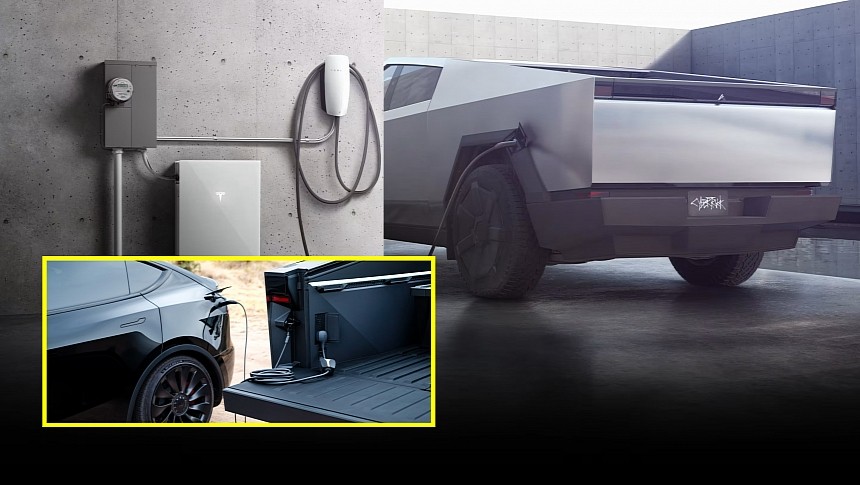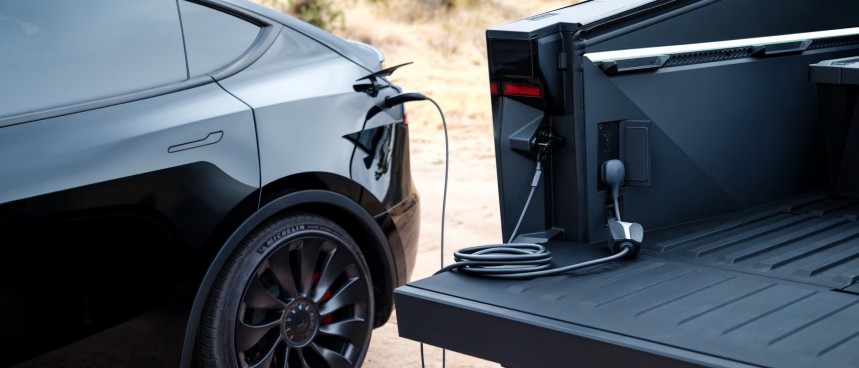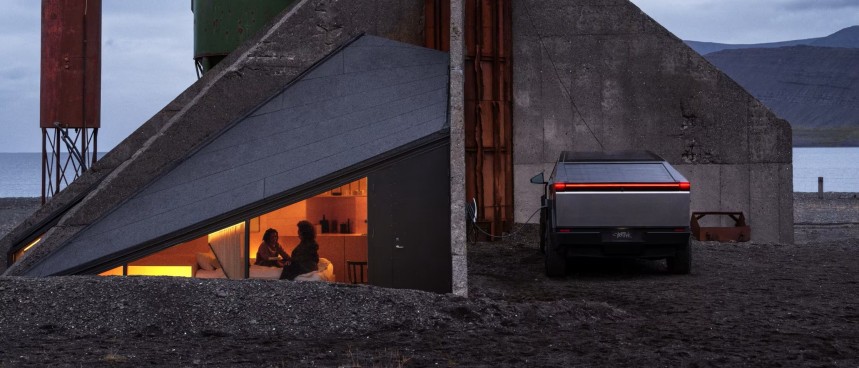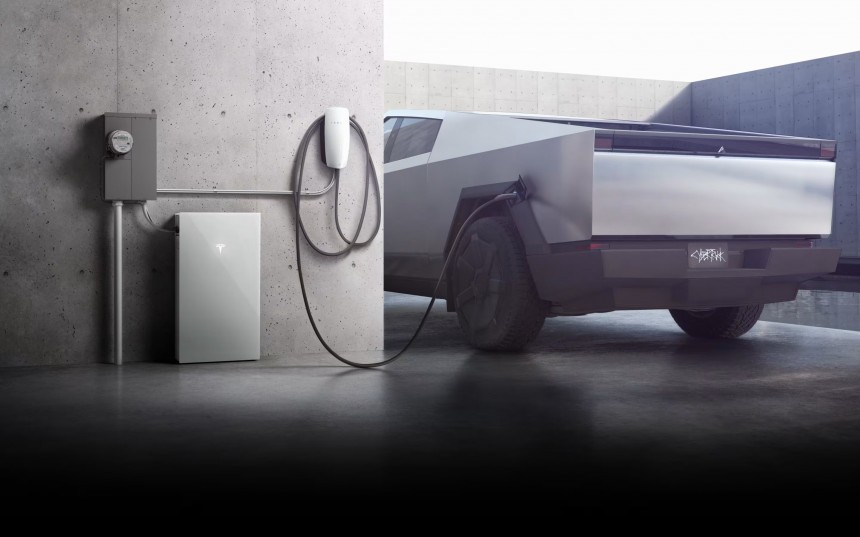While automakers like Ford or Hyundai made sure their battery-electric vehicles were able to keep the lights on when the grid temporarily tapped out, Tesla was very reticent toward implementing the feature known as bidirectional charging. But with the Cybertruck now out and about, the world's most valuable automaker is finally giving it to customers. But, as the saying goes, better late than never!
If we forget for a little while about having a reliable national high-power charging network, look away from mining for critical minerals, ignore the absence of an emotion-generating internal combustion engine, discount increased tire pollution, and disregard the complicated supply chains, electric vehicles (EVs) are undeniably great.
More cars without an exhaust system is the best thing that can happen in dense urban environments. Burning fossil fuels through small, controlled explosions for mobility is what we're used to. But that doesn't mean we should keep doing it. EVs are fast, silent, and cheaper to "fill up" if you can charge at home. Considering an EV as your next car is a great idea if you can digest the higher price tags and don't live in an environment with harsh winters.
But one of the most fantastic things EVs can do for us is reduce our reliance on black gold. The price of crude oil is currently dictated by the Organization of the Petroleum Exporting Countries (OPEC) and its friends like Russia. If they decide to curb output, traders won't have anything to do other than go for higher prices.
With EVs, all you need is a working grid and time. Charging can take 15 to 25 minutes when that zero-emission car is hooked to a DC fast charger, around seven hours when a Level 2 charger is used, and between 11 hours and a day when plugging into a domestic socket. If your electricity provider can take advantage of renewable energy, then you're doing even more to fight global warming. When using solar, hydro, or wind power, your carbon footprint shrinks considerably.
But you don't have to care about the environment to buy an EV. You could get one just for the sake of trying out something new. But here's yet another advantage of having a car with a large battery on its floor: backup power!
But that's understandable. Tesla is deeply involved in the energy business. It has put its battery knowledge to good work. One of its products in this category is the Powerwall. It's a 13.5-kWh high-voltage energy storage unit that can send its electrons to your house at a maximum output of 5 kW.
A typical American household consumes around 28 kWh of electricity every day, according to the Energy Information Administration (EIA). In case of temporary grid failure, you could power your house for at least half a day with the electricity stored in the Powerwall.
This product's main advantage is that it can save your devices and appliances when the grid is overloaded. It kicks in instantly when it detects voltage fluctuations. It can also recharge itself during off-peak hours!
But why limit yourself to a 13.5-kWh battery when you could have an EV in your garage that will happily act as backup? The Model S, for example, has a 102.4-kWh high-voltage energy storage unit. Don't have anywhere to go? Keep it charged up to around 80%, and you could end up using that big battery to power your house temporarily.
But – wait a minute. You Can't! The popular carmaker didn't give the pricey sedan bidirectional charging. So, it can't become a mobile power plant like the F-150 Lightning or the Ioniq 5.
It also confirmed that the North American Charging Standard (NACS, the former Tesla port) comes with no limitations in this regard.
Tesla calls the Cybertruck's vehicle-to-load (V2L) function "Powershare." The Cybertruck will be able to deploy 11.5 kW of continuous power, which means it'll send 11.5 kW to your home every hour. That's better than all Cybertruck competitors. Given that the battery size is estimated at around 123 kWh, you could be looking at around 10 and a half hours of electricity supply on a full charge.
But to use this functionality, you'll need Tesla's Gateway and the Universal Wall Connector. Those who already have the Powerwall and the Wall Connector won't need additional hardware to charge their home. So, be ready to spend a little bit more to have this feature up and running if you're not already a Tesla energy customer.
You can also use the cargo bed outlets to charge other vehicles, tools, or devices. The brand did develop the Powershare Mobile Connector for those looking to extend this capability.
However, the main advantage of such a feature is that you can power your house until the battery's state of charge drops to 20%, run to the nearest Supercharger to replenish it until 80%, and then go back home to put the high-voltage energy storage unit to work.
Like camping and having many amenities? Well, here's yet another use for the V2L function!
That would certainly be amazing, but the brand should figure out a way to measure wear from powering an entire house and somehow include it in the warranty. Despite homes needing a small amp load, the cells are still working. It doesn't matter if the depth of discharge is tiny. You could have a Model X with 10,000 miles on the odometer and 20,000 miles worth of battery degradation.
Then, there's the hardware question. Can most recent Tesla EVs receive an over-the-air software update and have bidirectional charging, too? It's unlikely.
Tesla is still gatekeeping this amazing feature by limiting only to the Cybertruck for the time being. But let's hope it will debut on the upcoming Model Y refresh and set a new standard for how EV buyers can use their zero-emission cars. For now, though, it did well.
More cars without an exhaust system is the best thing that can happen in dense urban environments. Burning fossil fuels through small, controlled explosions for mobility is what we're used to. But that doesn't mean we should keep doing it. EVs are fast, silent, and cheaper to "fill up" if you can charge at home. Considering an EV as your next car is a great idea if you can digest the higher price tags and don't live in an environment with harsh winters.
But one of the most fantastic things EVs can do for us is reduce our reliance on black gold. The price of crude oil is currently dictated by the Organization of the Petroleum Exporting Countries (OPEC) and its friends like Russia. If they decide to curb output, traders won't have anything to do other than go for higher prices.
With EVs, all you need is a working grid and time. Charging can take 15 to 25 minutes when that zero-emission car is hooked to a DC fast charger, around seven hours when a Level 2 charger is used, and between 11 hours and a day when plugging into a domestic socket. If your electricity provider can take advantage of renewable energy, then you're doing even more to fight global warming. When using solar, hydro, or wind power, your carbon footprint shrinks considerably.
Modern convenience
An EV can immediately become a reliable source of power for your tools or appliances. Even better, it can turn into a zero-emission, silent generator! The world's most valuable automaker ignored this important feature – until now.But that's understandable. Tesla is deeply involved in the energy business. It has put its battery knowledge to good work. One of its products in this category is the Powerwall. It's a 13.5-kWh high-voltage energy storage unit that can send its electrons to your house at a maximum output of 5 kW.
A typical American household consumes around 28 kWh of electricity every day, according to the Energy Information Administration (EIA). In case of temporary grid failure, you could power your house for at least half a day with the electricity stored in the Powerwall.
This product's main advantage is that it can save your devices and appliances when the grid is overloaded. It kicks in instantly when it detects voltage fluctuations. It can also recharge itself during off-peak hours!
But – wait a minute. You Can't! The popular carmaker didn't give the pricey sedan bidirectional charging. So, it can't become a mobile power plant like the F-150 Lightning or the Ioniq 5.
A new day
Fortunately, Tesla came to its senses and added this feature to the brand-new Cybertruck. It was about time! The Texas-based marque was so excited to show it off that it used a stranded F-150 Lightning to prove that its pickup truck can save a fellow driver from having to spend money on an emergency mobile charging unit or a tow truck.It also confirmed that the North American Charging Standard (NACS, the former Tesla port) comes with no limitations in this regard.
Tesla calls the Cybertruck's vehicle-to-load (V2L) function "Powershare." The Cybertruck will be able to deploy 11.5 kW of continuous power, which means it'll send 11.5 kW to your home every hour. That's better than all Cybertruck competitors. Given that the battery size is estimated at around 123 kWh, you could be looking at around 10 and a half hours of electricity supply on a full charge.
But to use this functionality, you'll need Tesla's Gateway and the Universal Wall Connector. Those who already have the Powerwall and the Wall Connector won't need additional hardware to charge their home. So, be ready to spend a little bit more to have this feature up and running if you're not already a Tesla energy customer.
However, the main advantage of such a feature is that you can power your house until the battery's state of charge drops to 20%, run to the nearest Supercharger to replenish it until 80%, and then go back home to put the high-voltage energy storage unit to work.
Like camping and having many amenities? Well, here's yet another use for the V2L function!
Expanding is a must!
Tesla also got some of its existing customers excited about Powershare because it says that the feature is "currently available for the Cybertruck only." Some think it could become available to other EVs in the brand's portfolio because of one word: "currently."That would certainly be amazing, but the brand should figure out a way to measure wear from powering an entire house and somehow include it in the warranty. Despite homes needing a small amp load, the cells are still working. It doesn't matter if the depth of discharge is tiny. You could have a Model X with 10,000 miles on the odometer and 20,000 miles worth of battery degradation.
Then, there's the hardware question. Can most recent Tesla EVs receive an over-the-air software update and have bidirectional charging, too? It's unlikely.
Tesla is still gatekeeping this amazing feature by limiting only to the Cybertruck for the time being. But let's hope it will debut on the upcoming Model Y refresh and set a new standard for how EV buyers can use their zero-emission cars. For now, though, it did well.











